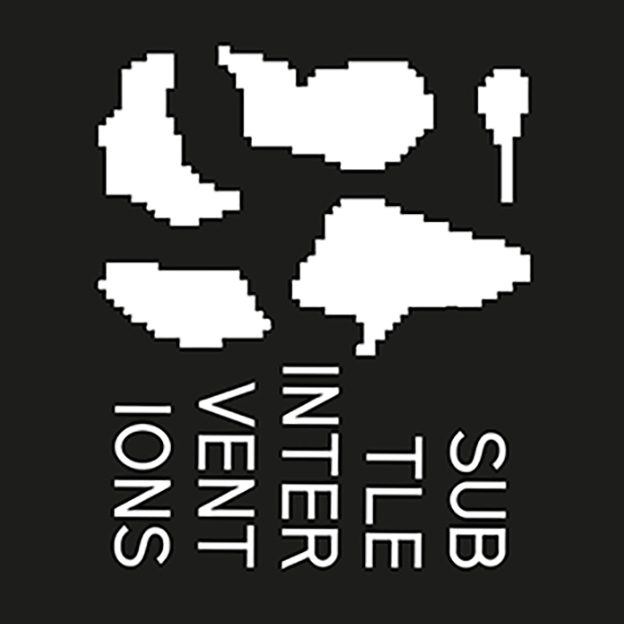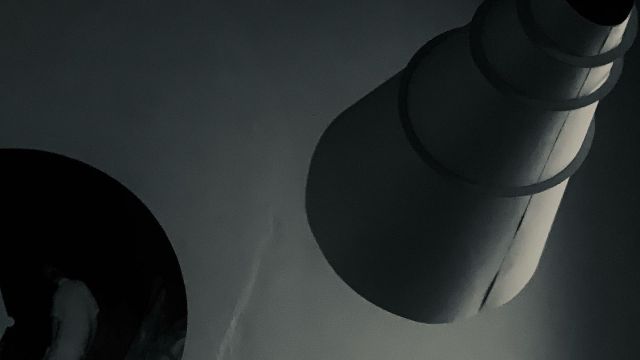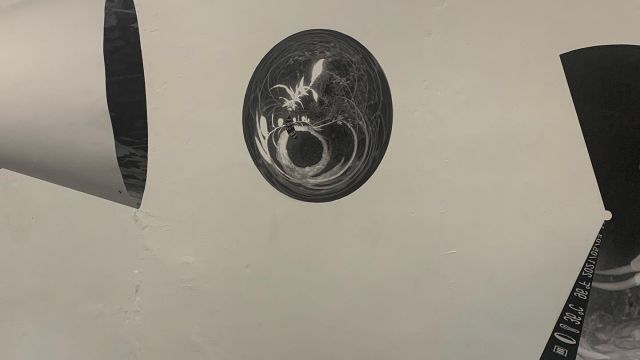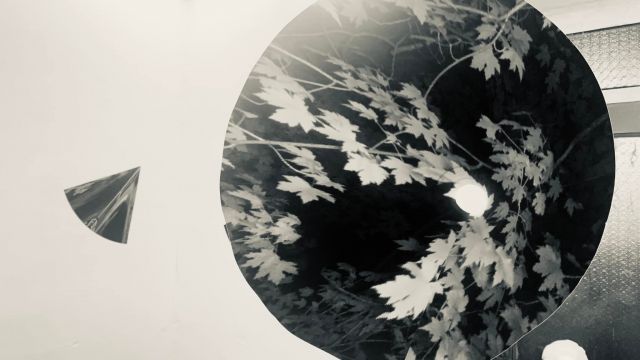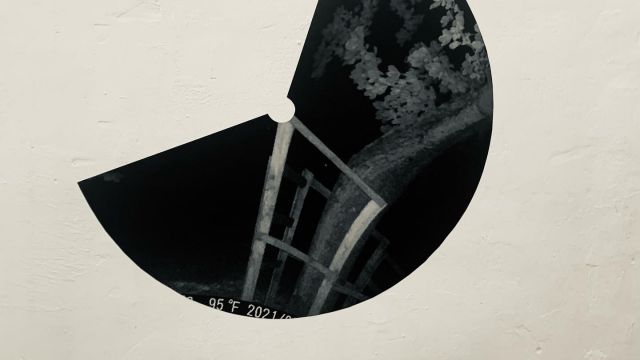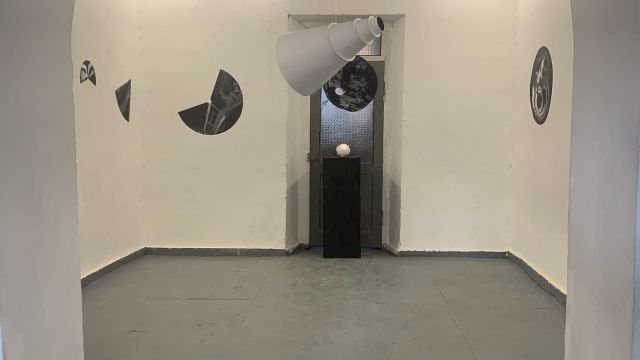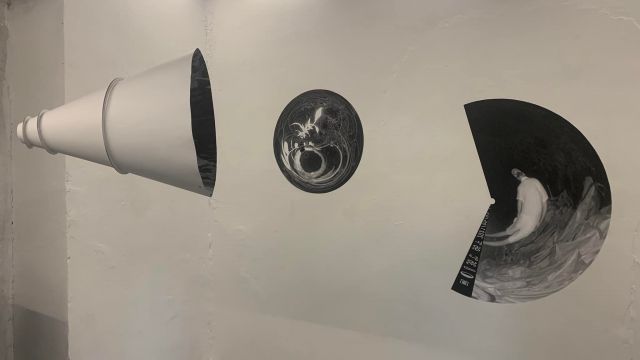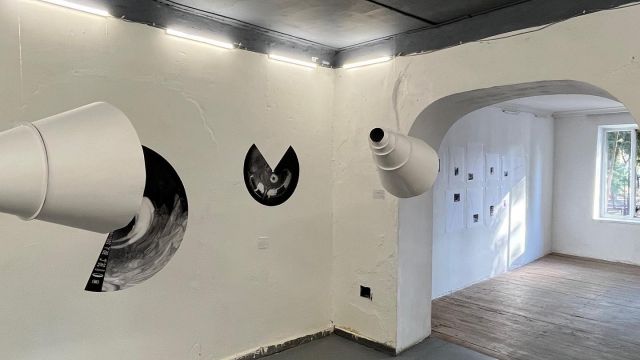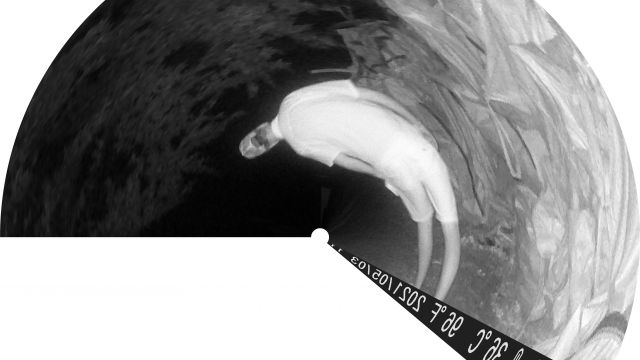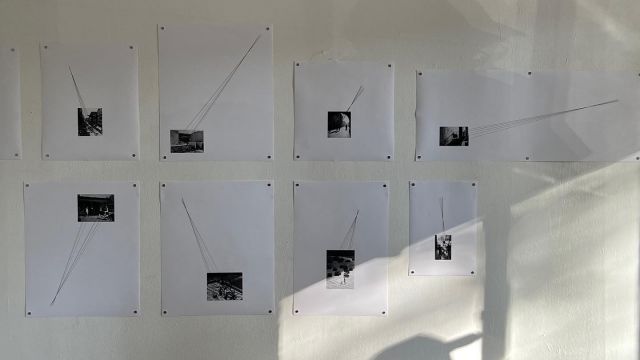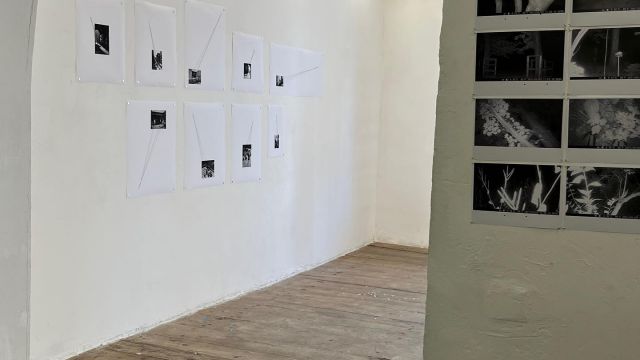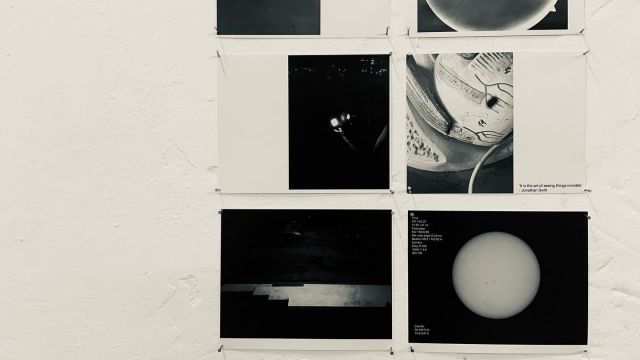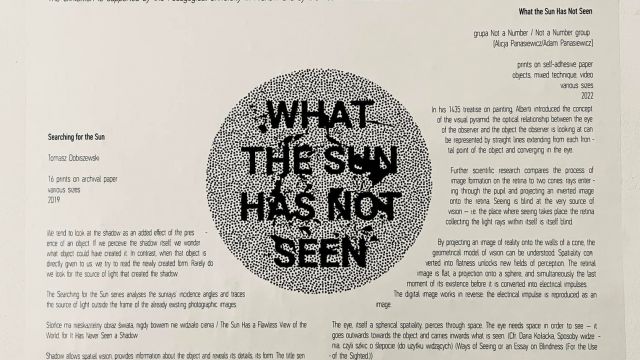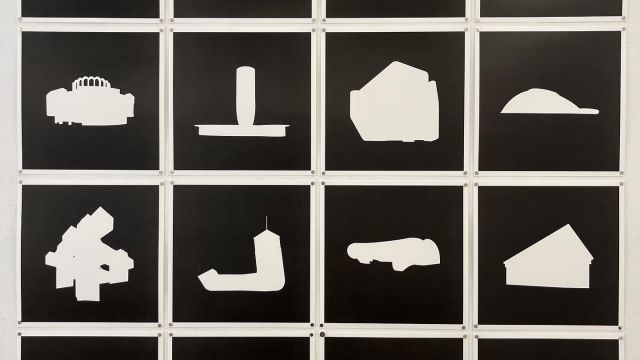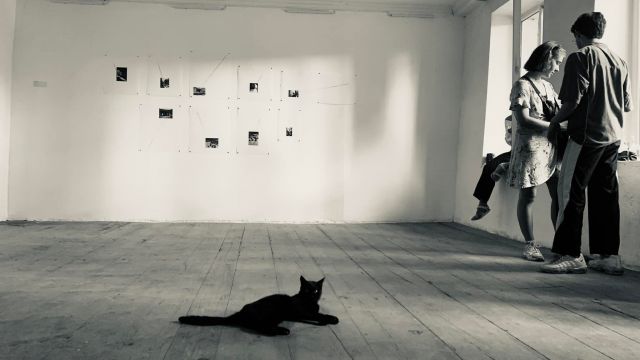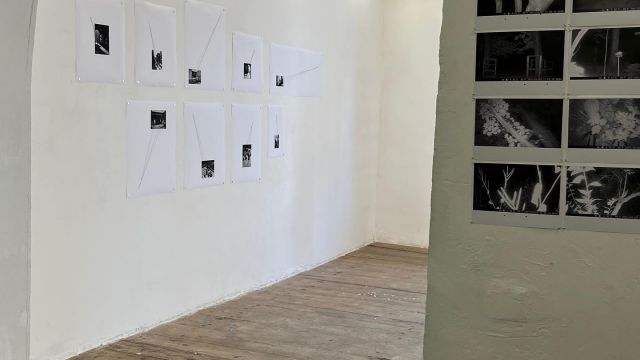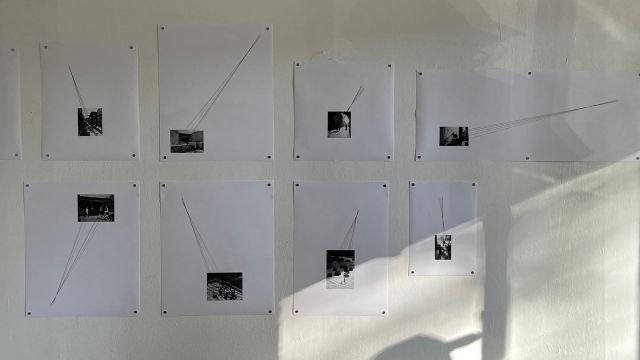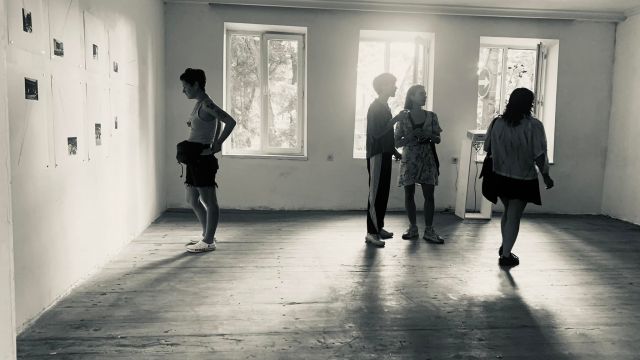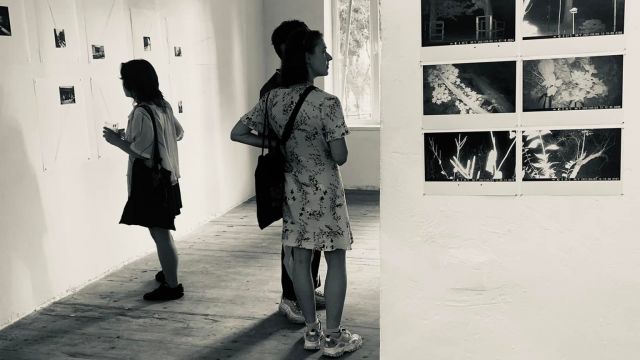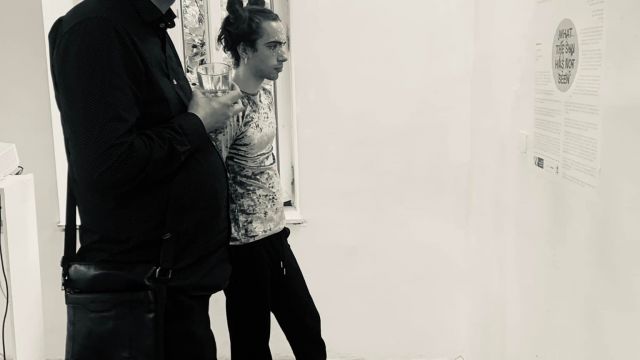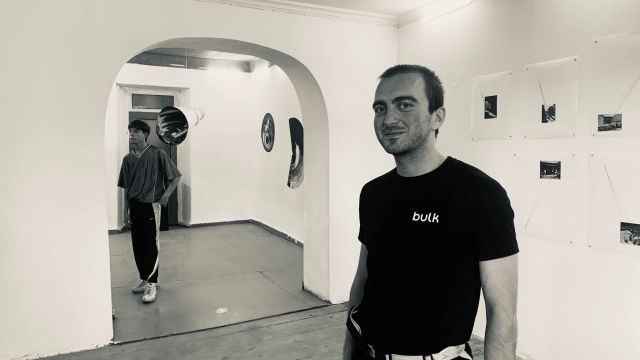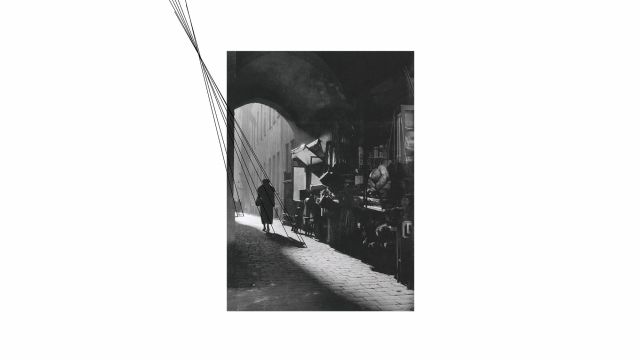What the Sun Has Not Seen
Exploring that which is hidden, unlit (like the dark side of the Moon), invisible to the Sun and the human eye.
Untitled Gallery
Tbilisi, Georgia
07.2022
Alicja Panasiewicz/Adam Panasiewicz
What the Sun Has Not Seen
In his 1435 treatise on painting, Alberti introduced the concept of the visual pyramid: the optical relationship between the eye of the observer and the object the observer is looking at can be represented by straight lines extending from each frontal point of the object and converging in the eye.
Further scientific research compares the process of image formation on the retina to two cones: rays entering through the pupil and projecting an inverted image onto the retina. Seeing is blind at the very source of vision – i.e. the place where seeing takes place: the retina collecting the light rays within itself is itself blind.
By projecting an image of reality onto the walls of a cone, the geometrical model of vision can be understood. Spatiality converted into flatness unlocks new fields of perception. The retinal image is flat, a projection onto a sphere, and simultaneously the last moment of its existence before it is converted into electrical impulses.

The digital image works in reverse: the electrical impulse is reproduced as an image.
Visibility is shared by people who have eyes with which they can see and shape reality. Seeing, on the other hand, according to Derrida, is contained already in not-seeing: in seeing one thing, the obscuring of something else is inscribed, while the visible itself penetrates the interior.
Modern technologies allow us to perceive reality quite differently than before. The phenomenon of light, the specificity of seeing and not seeing in the absence of light, is explored using the effect of night vision. In the installation presented at Untitled Gallery in Tbilisi used a night vision device to create photos with its specific way of registering colour, rendering details, shades of grey, depth of shadow, and depth of image. It is an attempt at understanding the most primordial and evolutionary features of the phenomenon of seeing. Seeing is embodied in light. It is the light that guides seeing, makes it possible to see, and conditions seeing. Seeing in light is cognition.
Tomasz Dobiszewski
Searching for the Sun
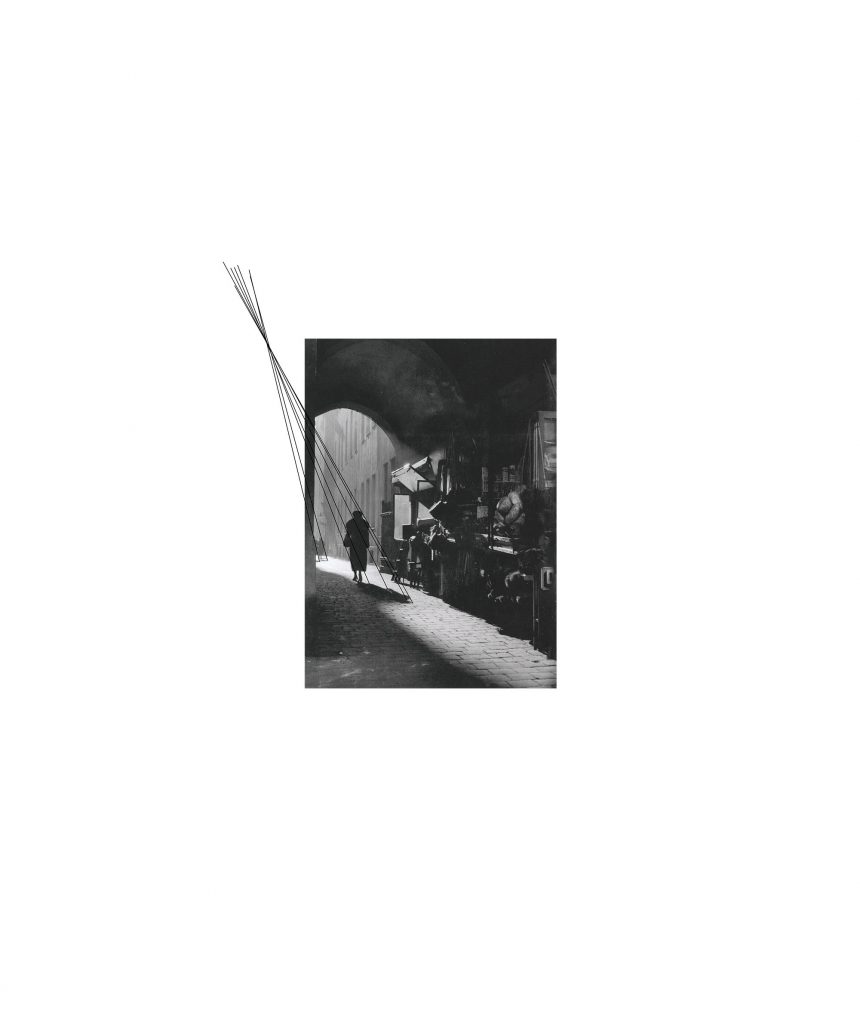
We tend to look at the shadow as an
added effect of the presence of an object. If we perceive the shadow itself, we
wonder what object could have created it. In contrast, when that object is
directly given to us, we try to read the newly created form. Rarely do we look
for the source of light that created the shadow. The Searching for the Sun series analyses the sunrays’ incidence
angles and traces the source of light outside the frame of the already existing
photographic images.
Słońce ma nieskazitelny obraz świata, nigdy bowiem nie widziało cienia/The Sun Has a Flawless View of the World, for It Has Never Seen a Shadow
The shadow allows spatial vision,
provides information about the object and reveals its details, its form. The
title sentence became an inspiration for a tale on our star’s metaphysical
perception of the world, a tale in which the shapes of Georgian architecture
have been softened through the reduction of shadows.
In his photographs, Tomasz Dobiszewski searches for objective features conditioning visible images. He explores the incorporeality of photography, the flatness of the image determined by the direction of light rays. In its flatness, photography negates the carnality of the body, belonging to the realm of touch. It limits perception only to the visuality, which deprives the world of its physical qualities: smell, texture, and tactile sensations such as temperature, smoothness, and softness.
Photographs cutting out spatial objects reduced to white spots against a background of black seem to be abstract images drawn by the hand of geometry. The flat surface of photography strikes at the essence of the sight and makes it impossible to venture out. Still, it opens the doors of memory and imagination, memories of smell, taste, form, light and shadow. It also makes us aware of the existence of time and its retention in photography. The direction of light rays, the time of day, and the intensity of sunlight are the place and time captured when pressing the shutter. The moment when the photographer and his camera stand facing the scene – the reality.
